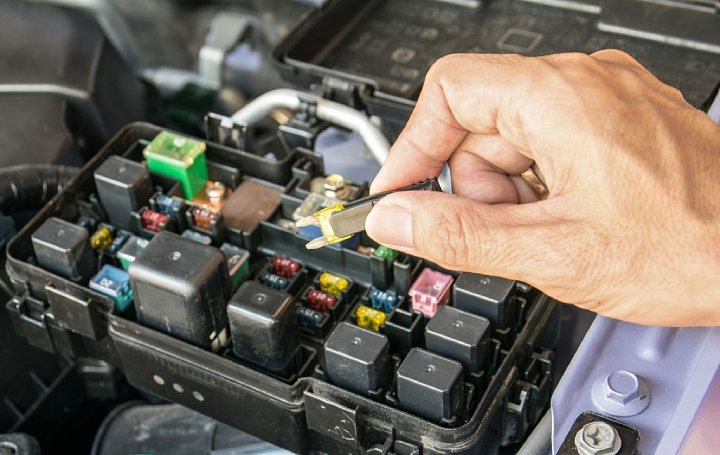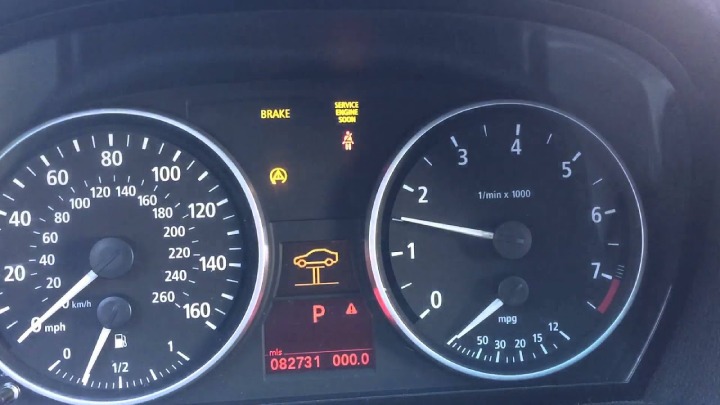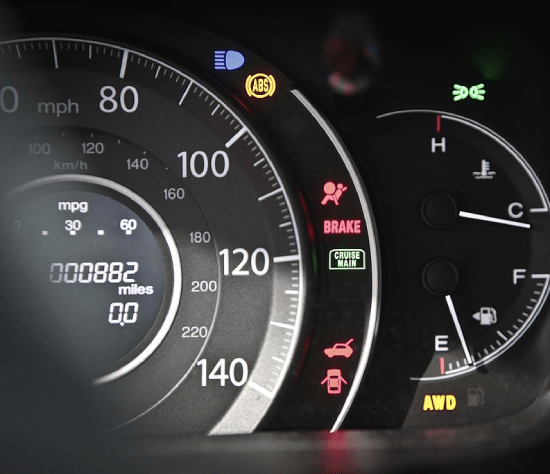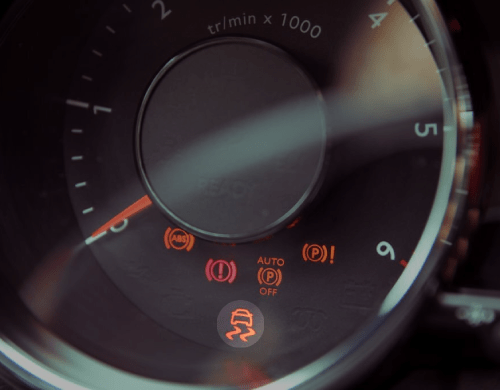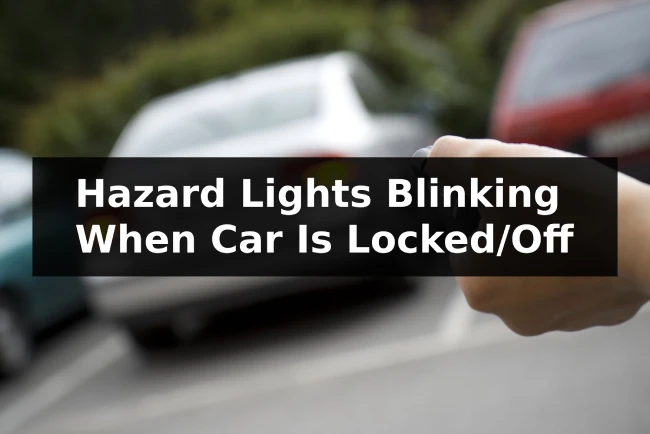If you’re a mechanic, then you know that diagnosing car problems can be tricky. Sometimes, a problem may seem like it has one cause when in reality, it has multiple causes. This can be especially true when it comes to electrical issues. Today, we’re going to talk about one such issue – low battery gauge readings. We’ll discuss what could be causing this problem and how you can go about fixing it. So if you’re ready to learn more, read on!
What Does A Low Battery Gauge Show?
When you see the low car battery gauge on your vehicle’s dashboard, it’s time for a reality check. This less popular indicator means that the battery in your car is not functioning as well as it should and requires attention.
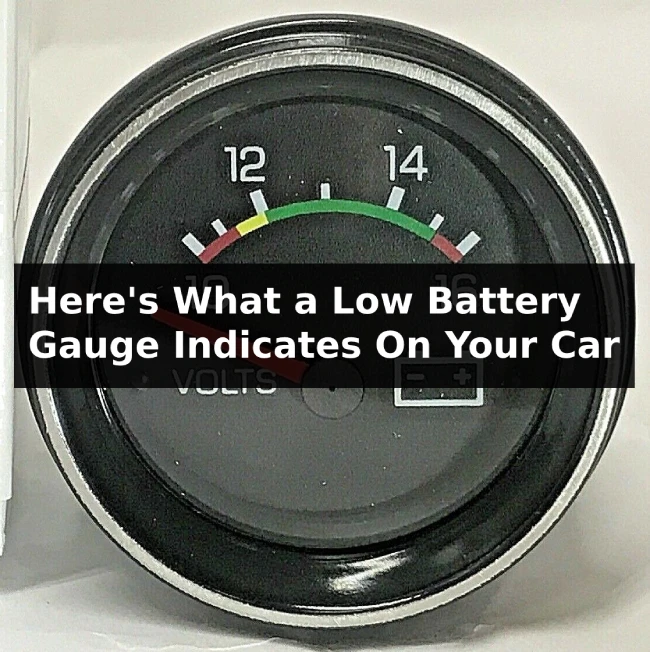
A low gauge battery reading is indicated by a voltage of 12.2 volts or less, meaning that it is time to consider a replacement. A low battery voltage is usually caused by sulfation, which causes the battery to leak and eventually die. A digital voltmeter can help a car owner determine if the battery is fully depleted and when it needs to be replaced.
Turning the key and starting the automobile should increase the voltage to between 14 and 14.5 volts. This shows that the alternator is successfully charging the battery. If this reading drops to or stays below 12.5 volts, either the alternator isn’t working correctly or the battery isn’t charged enough to be used.
If this keeps happening, it is a sign that it is time to replace the battery. When the engine is operating, if the voltage reads less than 12 volts on a digital gauge, there is likely a problem with the charging system.
An adequately charged battery will register somewhere about 12.65 volts on a voltmeter. But if the voltage drops below 12.45 volts, the battery is either damaged or has been recharged too many times and needs to be replaced. Usually, the voltage would be between 13 and 15 volts. If the voltage is over 15 or under 13, the alternator isn’t working correctly, or the battery can’t keep a full charge.
If the voltage of your car’s battery reads between 11.75 and 11.89, then the battery is completely dead. A dead battery is indicated by a reading in that range, at which point the car’s owner should start thinking about getting a new battery. A manual check should always be done to confirm the voltmeter gauge reading. If you turn the key but don’t start the car, the battery should indicate 12.6 volts. When the engine is running, the voltage displayed by the automobile battery should be between 13.7 and 14.7. If the numbers are low, the battery or the alternator might fail.
Related content: Battery Discharge Increased In BMW: What Does It Mean?
What Causes A Low Battery Voltage?
When it comes to maintaining a car’s electrical system, one of the most important measurements to watch out for is battery voltage. But why do car battery voltages drop in the first place? There are several potential causes.
01. Parasitic drain
Parasitic drain occurs when the electrical components of an automobile continue to draw power from the battery after the ignition has been turned off. This isn’t like when you forget to turn off the headlights, or the door doesn’t shut all the way, leaving the light on all night. Instead, this is when nothing is running, and the battery is still being discharged. In a sense, this is to be expected.
Computers, radios, clock radios, alarm clocks, power mirrors, and other electrical components draw little power (a parasitic drain) when turned on. However, your battery’s performance and lifespan may be negatively impacted if the amount of electricity drawn is above the typical range.
02. A Weak Battery
A vehicle’s voltage drops due to wear and tear. This is because the voltage output of an old battery gradually decreases over time, severely limiting its ability to store a charge.
03. Faulty Alternator
The battery is constantly draining in an automobile as long as the engine is on. When the alternator kicks in, the battery can maintain its charge. The alternator is a device that does this mechanical work. The engine turns the alternator while it operates. The energy produced by the rotation is fed back into the battery. Under typical conditions, the alternator and battery will sync with one another. If one of these two halves stops working, the other will take over entirely.
A dead alternator will drain a car’s battery after a long time on the road. If the alternator is functional, the engine’s electrical system will automatically charge the car’s battery anytime the vehicle is in motion. A car battery needs an alternator to charge even if it’s new. This is important for the health of your car’s electrical systems. If the battery warning light comes on and flashes red, the battery needs attention. You must pull over quickly and have your vehicle serviced by a professional.
03. Corroded or Loose Battery Connections
Dirty or corroded terminals on the battery can also disrupt a stable flow of electricity, resulting in low voltage. The stability of terminal connections is something that should be periodically checked and cleaned if necessary, especially as part of regular maintenance and inspections.
04. A Bad Ground
The most common cause of bad ground is corrosion at the ground terminals. The disconnected wire is another cause of the poor grounding. It is also essential to check the ground cable’s resistance. Voltage drops when there is poor grounding.
Related content: Auxiliary Battery Malfunction: What Does It Mean & How To Fix
05. Bad Battery Terminals
A significant voltage loss will occur if the battery terminals are not securely fastened or started corroding. Keeping a battery in good condition requires routine maintenance, such as changing damaged terminals and washing down the positive and negative posts.
06. Excessive Electrical Load
Overloading the charging system might cause the charging voltage to drop, preventing the battery from being charged to its full potential. Sometimes this happens when an electrical component stops working correctly.
To give you an idea, if there is a problem with the fan circuit in the electrical cooling system, the fan will run at full speed, soaking up a lot of energy and bringing the voltage down. Depending on how well the system cools, this could slow down the battery charge.
07. Undersized Alternator
Low charging voltage could indicate that your vehicle’s alternator is underpowered and not producing enough current and voltage. The vehicle’s electrical demands require installing a new battery and alternator.
08. Faulty ECU
An Electronic Control Unit (ECU) controls some modern automobiles’ charging systems. However, an ECU with a bug in its hardware or software could be responsible for the low voltage output from the charging system.
09. Slipping belt
A serpentine belt not adequately secured to the alternator’s pulley can slip on the pulley, reducing charging output.
Related content: What Does Battery Discharge Warning Mean?
What Should My Battery Gauge Be At?
When it comes to understanding the condition of your vehicle battery, one of the most important numbers you should be aware of is your battery gauge. This number reflects how much charge is left in your battery and can range from 0 volts (indicating that the battery is completely discharged) to around 12 – 14 volts (indicating a fully charged battery).
A fully charged car battery should register at least 12.6 volts. When the engine is running, this reading needs to be between 13.7 and 14.7 volts. Start the car and turn on the headlights to check the electrical system if you don’t have a multimeter to read the battery voltage. If the lights are dim, the alternator does not charge the battery enough to power them.
A brighter light output at higher engine speeds indicates that the alternator is providing current but possibly not enough at idle to keep the battery charged. If the lights are a consistent brightness and do not dim as the engine is revving, the charging system is likely to be okay. If your vehicle’s battery has been giving you trouble, but the headlight test returned okay, you may want to see if the battery is holding a charge or if something else is draining it.
What Happens When Driving With A Low Battery?
Getting stuck with a low battery while driving is a frustrating experience. Without the battery’s help, starting your car can become a real challenge; worse yet, it is extremely dangerous to try and push-start it.
Most of the work, in this case, is being done by your alternator. Your vehicle won’t need additional power, as it can generate all the current required. There is, however, no assurance that your vehicle will remain operational. For example, it is easy to exceed the alternator’s capacity by switching on the car’s headlights. As a result, your car may suddenly lose power.
To prevent these kinds of issues, drivers should check their battery regularly to ensure it is always in good condition. Otherwise, running into major problems could end up becoming an expensive endeavor!
Related content: C1241 Code Toyota – Low Battery Positive Voltage (Explained)
What Are the Symptoms of a Bad Battery Gauge?
Dim indicators or flicker
Dim or flickering gauges are an early sign of a problem with the voltage regulator. If the voltage regulator is malfunctioning, the gauges might be unable to get enough power, resulting in dull or flickering illumination. Although the instruments may still be operational, nighttime or low-light driving conditions may make it difficult to read the instrument cluster.
Unreliable or Erroneous Results
Inaccurate or erroneous readings from the voltage regulator are another sign of a problem with the regulator. The readings may be inconsistent or erroneous if there is a problem with the gauge’s voltage regulator. Displays’ numbers or needles may flash or blink erratically or even stop working altogether. The regulator may be nearing the end of its useful life, making the instrument cluster difficult to interpret.
Malfunctioning Group of Instruments
Another sign of something wrong with the vehicle’s instrument voltage regulator is if the instrument cluster stops working. If the voltage regulator for the instruments fails, the instrument cluster will lose power and stop working.
Some automobiles and pickups use an electronic component known as the instrument cluster voltage regulator. It controls the speedometer’s power supply and other instrument cluster gauges. The instrument cluster is a crucial part of any car because the speed and engine information are displayed for the driver to see.
In some cases, the car might start up and be drivable, but the driver would have no way of knowing if there was a problem, and driving without a working speedometer is dangerous and against the law in many places. Even though voltage regulators aren’t standard equipment, the vehicles with them can’t work correctly without them. It’s essential to get a professional diagnosis from a technician because electrical problems might cause similar symptoms.
Every since I was a little boy, I can remember spending the afternoons in my dad’s repair shop. I got my first car at 16 and it was the best feeling ever!
I have contributed to various automotive publications but decided it’s finally time to settle for something constant.

